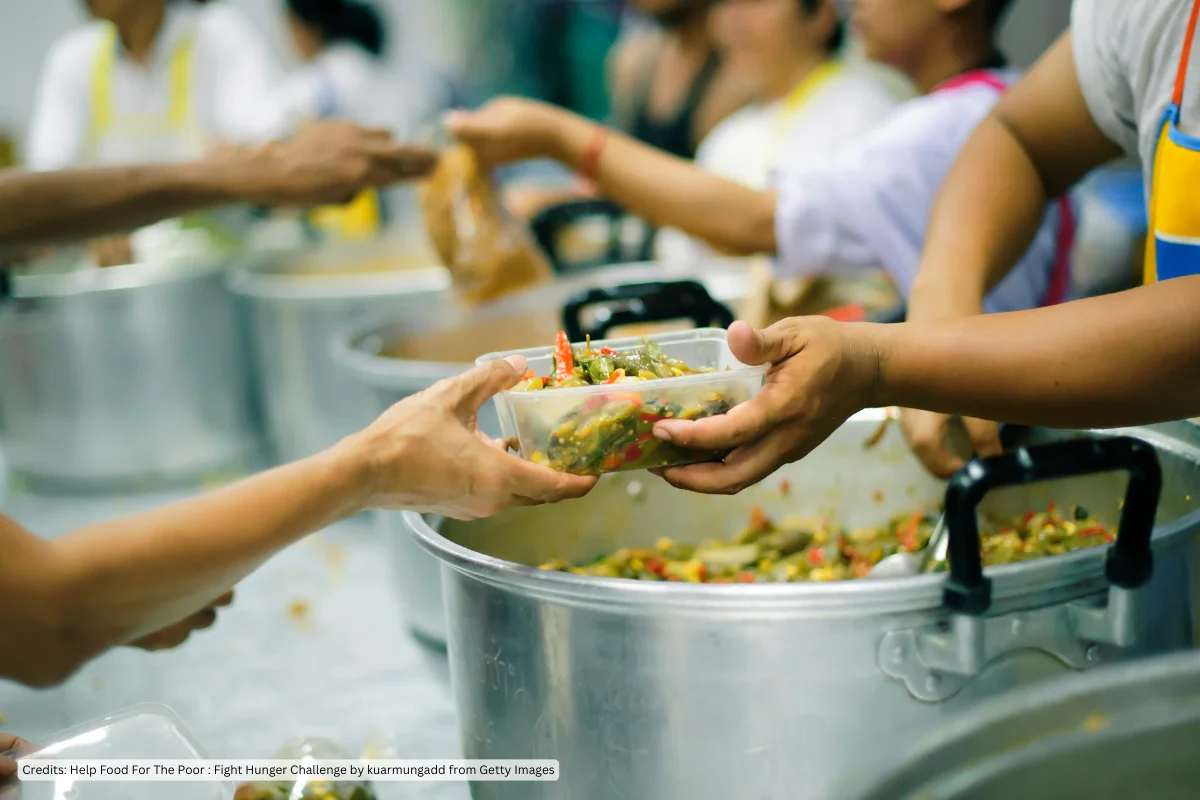
- Business
- Finance
- Funding
- Fundraising
- Leadership
- Governance
- Grants
- Mergers
- Investment
- Partnerships
- Policy
- Regulations





Save the Children welcomes Australia’s move to rejoin the Green Climate Fund
Menchie Khairuddin
Budget burdens survivors with the cost of domestic violence for another year
Menchie Khairuddin
Shoalhaven business helps lower homeowner energy costs
Menchie Khairuddin
What Can Charities Do if They Have Gone into Debt?
Third Sector

New funding for Australian-first humanitarian engineering program
Menchie Khairuddin
Funding for parenting support programs for rising youth crime rates
Menchie Khairuddin
WaterAid Australia to raise funds for water, sanitation and hygiene projects
Menchie Khairuddin
$1 million in funding to help restore local environments
Menchie Khairuddin
New report on funding NFPs for drought resilience and recovery
Menchie Khairuddin
$3.7M in funding for infection control research
Menchie Khairuddin
$520K in grants for community organisations
Menchie Khairuddin


WaterAid Australia to raise funds for water, sanitation and hygiene projects
Menchie Khairuddin
Over $10,000 to combat youth homelessness
Menchie Khairuddin
$850K raised for young Aussies impacted by childhood cancer
Menchie Khairuddin

Fundraising walk to help 70K homeless pets
Third Sector
Campaign to raise $600K+ for local charities
Menchie Khairuddin
AHHA on how to strengthen leadership continuity
Menchie Khairuddin
Redkite welcomes Justin Steven to the Board of Directors
Menchie Khairuddin
Local leaders share stories of drought recovery
Menchie Khairuddin
CARE Australia appoints Morgana Ryan as permanent CEO
Menchie Khairuddin


Kids First Australia welcomes new CEO
Third Sector
CARE Australia appoints Kirsty Robertson as CEO
Menchie Khairuddin

ITECA unveils student-centric blueprint for Parliament
Menchie Khairuddin



Young people to drive residential care reform in Queensland
Menchie Khairuddin

Voluntary disclosure policies lead global sustainability agenda
Menchie Khairuddin

More than $157,766 in grants for youth-focussed projects
Menchie Khairuddin

$25K in grants to help Rochester plan for building back better
Menchie Khairuddin
Up to $490K in grants for social and affordable housing
Menchie Khairuddin

Over $6M in grants to improve ageing in Australia
Third Sector
New report on funding NFPs for drought resilience and recovery
Menchie Khairuddin
Groundbreaking merger between SecondBite and FareShare
Menchie Khairuddin
Kids First Australia expands to support at-risk children and youth
Menchie Khairuddin
HESTA and Mercy Super announces plan to merge
Lourdes Antenor




Advocates urge grassroots investment for future Paralympic success
Menchie Khairuddin

Karitane receives $13M for Fairfield children and families
Menchie Khairuddin
WHEN welcomes four new Board Members
Menchie Khairuddin
$2M committed to First Australians Capital Catalytic Fund
Menchie Khairuddin




Partnership to build healthier communities through education
Menchie Khairuddin
$50K in grants to improve rural communities
Menchie Khairuddin


Calls for more housing relief
Menchie Khairuddin
FRRR and Charter Hall expand partnership
Menchie Khairuddin
$5M partnership to strengthen capacity and resilience
Menchie Khairuddin




ASU calls for immediate action following the murders of 4 women this week
Menchie Khairuddin
The Paul Ramsay Foundation on the referendum result
Menchie Khairuddin
Budget burdens survivors with the cost of domestic violence for another year
Menchie Khairuddin
Children displaced by climate shocks doubled to a record high
Menchie Khairuddin
New reform a welcome step to free charities from red tape
Menchie Khairuddin
Fundraising harmonisation a win for charities
Menchie Khairuddin
ACNC calls on Charities to submit their Annual Information Statement
Menchie Khairuddin




- Social Affairs
- Child Protection
- Education
- Environment
- Gender and LGBTIQ+
- Health
- Housing and Homelessness
- Humanitarian Crisis
- Mental Health
- Youth
- Child Protection
- Education
- Environment
- Gender and LGBTIQ+
- Health
- Housing and Homelessness
- Humanitarian Crisis
- Mental Health
- Youth


WaterAid Australia to tackle the global water crisis
Menchie Khairuddin
Australian Dingo Foundation condemns Lethal control extension
Menchie Khairuddin
WaterAid Australia to raise funds for water, sanitation and hygiene projects
Menchie Khairuddin
Redkite Expands Go Red Initiative to support children with cancer
Menchie Khairuddin
AHHA on how to strengthen leadership continuity
Menchie Khairuddin
The Fred Hollows Foundation to improve access to eye healthcare
Menchie Khairuddin


For Change Co. welcomes Miranda Campbell as new CEO
Menchie Khairuddin
Mission Australia calls for donations to combat homelessness
Menchie Khairuddin
Over $10,000 to combat youth homelessness
Menchie Khairuddin
More than $280K in grants for mental health projects
Menchie Khairuddin
$500K in grants are available for initiatives to support carers
Menchie Khairuddin
Vital Survey to Improve Wellbeing
Menchie Khairuddin
Doubled donations to meet growing demand for PNDA support
Arabella Gibson - Appointments
- First Nations
- Latest Stories


Australian Dingo Foundation condemns Lethal control extension
Menchie Khairuddin

Doubled donations to meet growing demand for PNDA support
Arabella Gibson
New ‘Dream Home Art Union’ launched to support veterans
Ritchelle Drilon

New tool launched to support NDIS and aged care growth across Australia
Adrianne Saplagio
- Events
- Authors
- Partners
- Business
- Finance
- Funding
- Fundraising
- Leadership
- Governance
- Grants
- Mergers
- Investment
- Partnerships
- Policy
- Regulations





Save the Children welcomes Australia’s move to rejoin the Green Climate Fund
Menchie Khairuddin
Budget burdens survivors with the cost of domestic violence for another year
Menchie Khairuddin
Shoalhaven business helps lower homeowner energy costs
Menchie Khairuddin
What Can Charities Do if They Have Gone into Debt?
Third Sector

New funding for Australian-first humanitarian engineering program
Menchie Khairuddin
Funding for parenting support programs for rising youth crime rates
Menchie Khairuddin
WaterAid Australia to raise funds for water, sanitation and hygiene projects
Menchie Khairuddin
$1 million in funding to help restore local environments
Menchie Khairuddin
New report on funding NFPs for drought resilience and recovery
Menchie Khairuddin
$3.7M in funding for infection control research
Menchie Khairuddin
$520K in grants for community organisations
Menchie Khairuddin


WaterAid Australia to raise funds for water, sanitation and hygiene projects
Menchie Khairuddin
Over $10,000 to combat youth homelessness
Menchie Khairuddin
$850K raised for young Aussies impacted by childhood cancer
Menchie Khairuddin

Fundraising walk to help 70K homeless pets
Third Sector
Campaign to raise $600K+ for local charities
Menchie Khairuddin
AHHA on how to strengthen leadership continuity
Menchie Khairuddin
Redkite welcomes Justin Steven to the Board of Directors
Menchie Khairuddin
Local leaders share stories of drought recovery
Menchie Khairuddin
CARE Australia appoints Morgana Ryan as permanent CEO
Menchie Khairuddin


Kids First Australia welcomes new CEO
Third Sector
CARE Australia appoints Kirsty Robertson as CEO
Menchie Khairuddin

ITECA unveils student-centric blueprint for Parliament
Menchie Khairuddin



Young people to drive residential care reform in Queensland
Menchie Khairuddin

Voluntary disclosure policies lead global sustainability agenda
Menchie Khairuddin

More than $157,766 in grants for youth-focussed projects
Menchie Khairuddin

$25K in grants to help Rochester plan for building back better
Menchie Khairuddin
Up to $490K in grants for social and affordable housing
Menchie Khairuddin

Over $6M in grants to improve ageing in Australia
Third Sector
New report on funding NFPs for drought resilience and recovery
Menchie Khairuddin
Groundbreaking merger between SecondBite and FareShare
Menchie Khairuddin
Kids First Australia expands to support at-risk children and youth
Menchie Khairuddin
HESTA and Mercy Super announces plan to merge
Lourdes Antenor




Advocates urge grassroots investment for future Paralympic success
Menchie Khairuddin

Karitane receives $13M for Fairfield children and families
Menchie Khairuddin
WHEN welcomes four new Board Members
Menchie Khairuddin
$2M committed to First Australians Capital Catalytic Fund
Menchie Khairuddin




Partnership to build healthier communities through education
Menchie Khairuddin
$50K in grants to improve rural communities
Menchie Khairuddin


Calls for more housing relief
Menchie Khairuddin
FRRR and Charter Hall expand partnership
Menchie Khairuddin
$5M partnership to strengthen capacity and resilience
Menchie Khairuddin




ASU calls for immediate action following the murders of 4 women this week
Menchie Khairuddin
The Paul Ramsay Foundation on the referendum result
Menchie Khairuddin
Budget burdens survivors with the cost of domestic violence for another year
Menchie Khairuddin
Children displaced by climate shocks doubled to a record high
Menchie Khairuddin
New reform a welcome step to free charities from red tape
Menchie Khairuddin
Fundraising harmonisation a win for charities
Menchie Khairuddin
ACNC calls on Charities to submit their Annual Information Statement
Menchie Khairuddin




- Social Affairs
- Child Protection
- Education
- Environment
- Gender and LGBTIQ+
- Health
- Housing and Homelessness
- Humanitarian Crisis
- Mental Health
- Youth
- Child Protection
- Education
- Environment
- Gender and LGBTIQ+
- Health
- Housing and Homelessness
- Humanitarian Crisis
- Mental Health
- Youth


WaterAid Australia to tackle the global water crisis
Menchie Khairuddin
Australian Dingo Foundation condemns Lethal control extension
Menchie Khairuddin
WaterAid Australia to raise funds for water, sanitation and hygiene projects
Menchie Khairuddin
Redkite Expands Go Red Initiative to support children with cancer
Menchie Khairuddin
AHHA on how to strengthen leadership continuity
Menchie Khairuddin
The Fred Hollows Foundation to improve access to eye healthcare
Menchie Khairuddin


For Change Co. welcomes Miranda Campbell as new CEO
Menchie Khairuddin
Mission Australia calls for donations to combat homelessness
Menchie Khairuddin
Over $10,000 to combat youth homelessness
Menchie Khairuddin
More than $280K in grants for mental health projects
Menchie Khairuddin
$500K in grants are available for initiatives to support carers
Menchie Khairuddin
Vital Survey to Improve Wellbeing
Menchie Khairuddin
Doubled donations to meet growing demand for PNDA support
Arabella Gibson - Appointments
- First Nations
- Latest Stories


Australian Dingo Foundation condemns Lethal control extension
Menchie Khairuddin

Doubled donations to meet growing demand for PNDA support
Arabella Gibson
New ‘Dream Home Art Union’ launched to support veterans
Ritchelle Drilon

New tool launched to support NDIS and aged care growth across Australia
Adrianne Saplagio
- Events
- Authors
- Partners


































